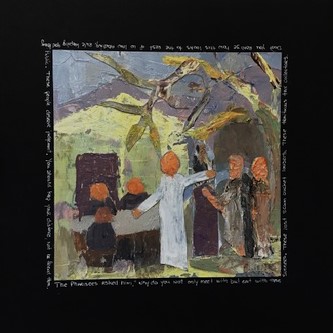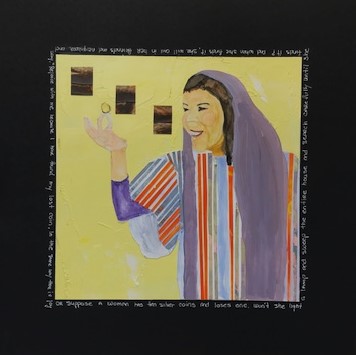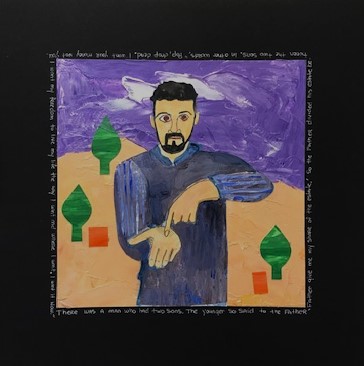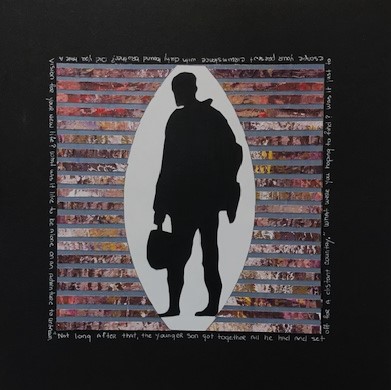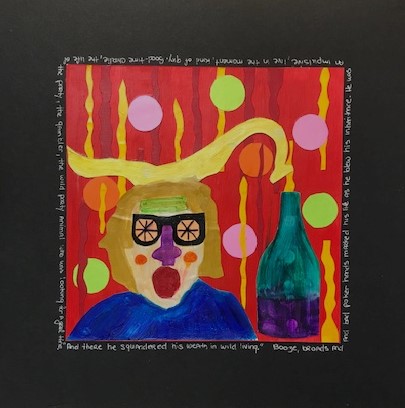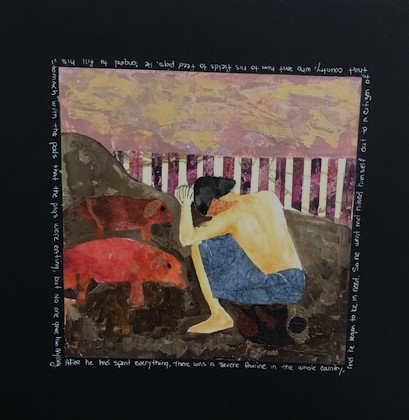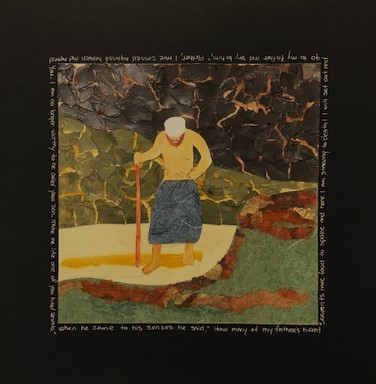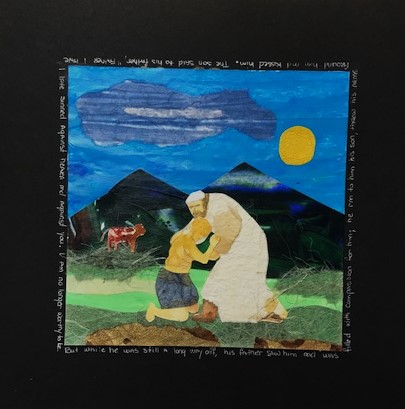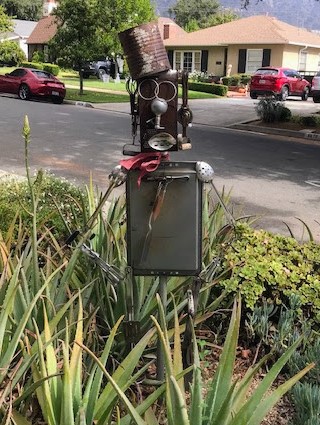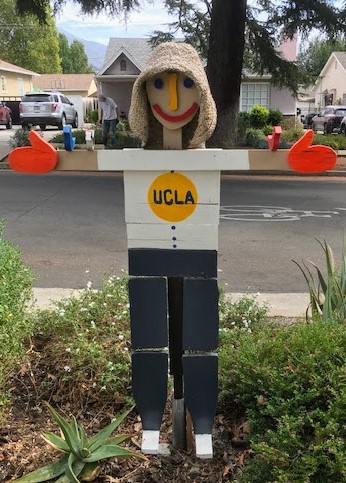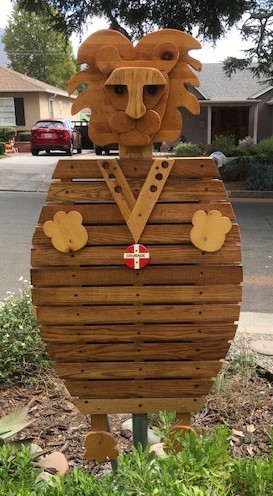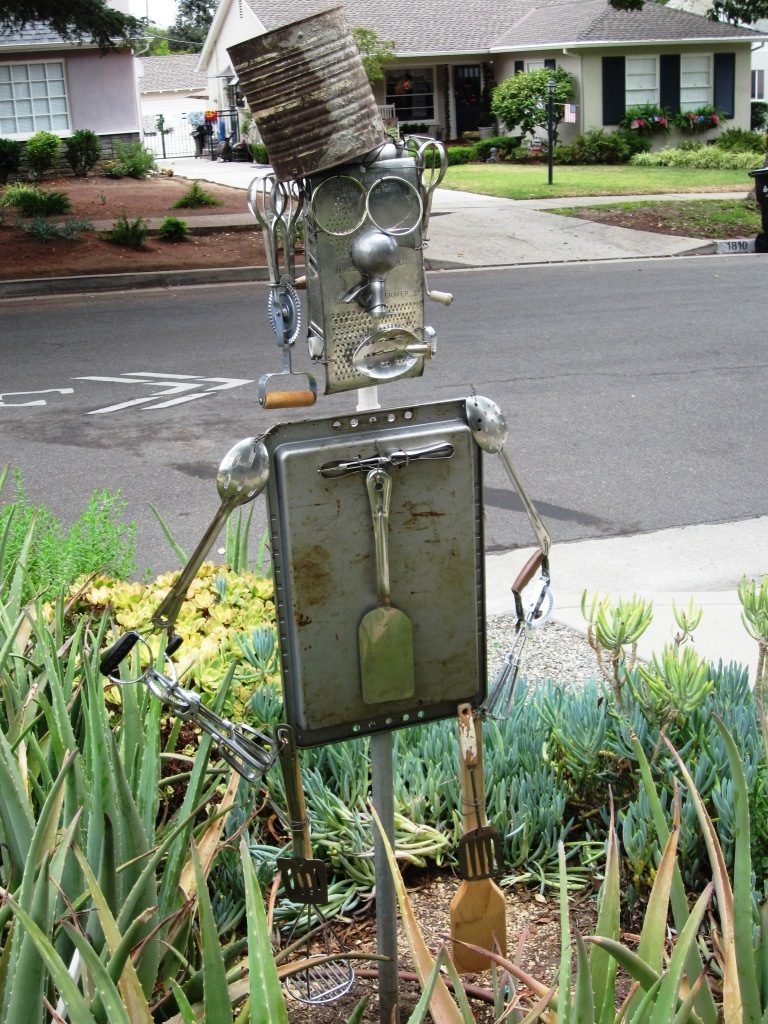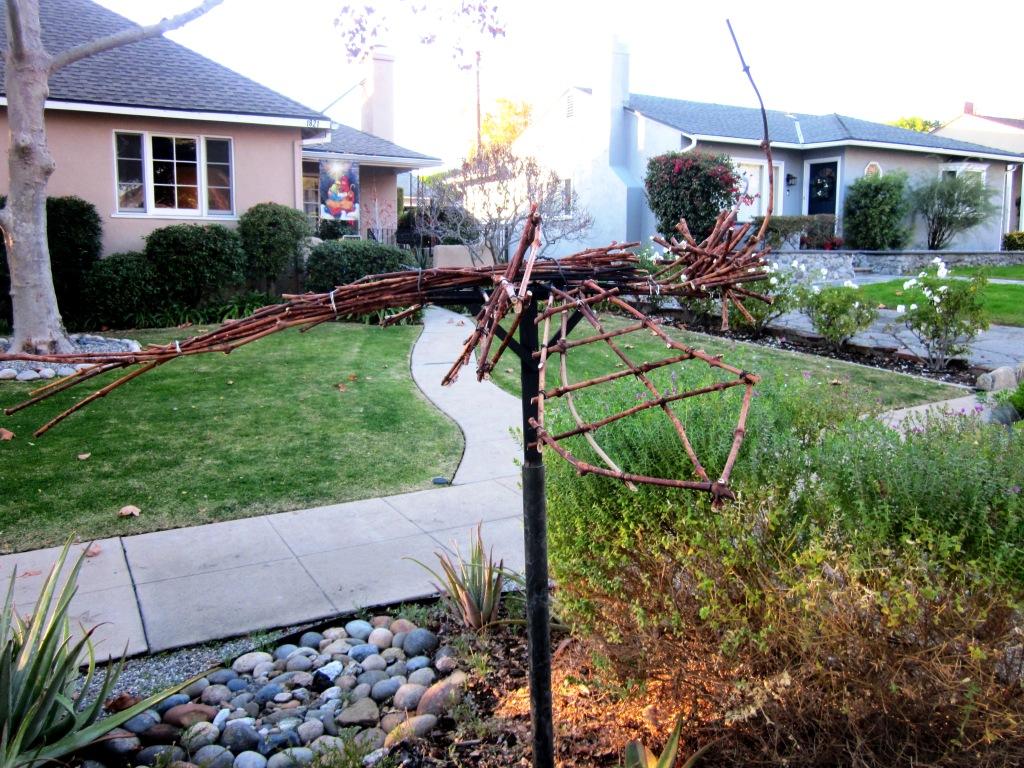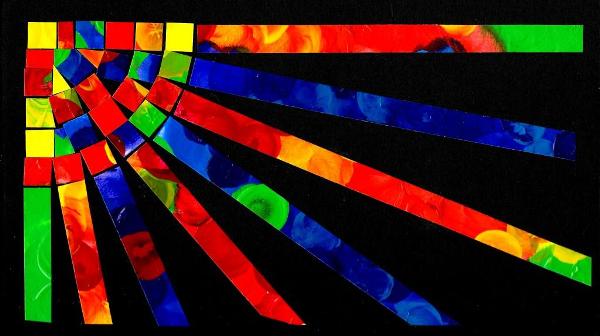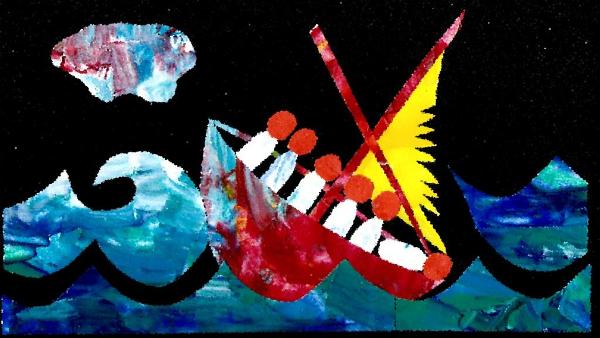I spent the past few months reflecting on Luke 15 and the stories of the Lost Sheep, The Lost Coin, and the Lost Sons. Below are a series of paintings that I completed to help my reflection process. I don’t think I am done with the series yet.
Author Archives: Steve
The Wizard of Oz
The Wizard of Oz is a story of exile and return. A little girl and her dog are displaced to the magical land of Oz. She longs to return home to her Auntie Em and Uncle Henry. Three characters that she meets along the way work together to help her accomplish her goal. Each offers a gift and asks a question.
The Tin Man, made from kitchen utensils used by our church to serve the homeless for thirty years, wants a heart. He represents emotion and his gift is compassion. How do we cultivate compassion in a world that often seems cruel?
The Scare Crow, made from recycled fifty-year-old church pews, wants a brain. He represents the intellect and his gift is wisdom. How do we cultivate wisdom in a world that is often superficial?
The Lion, made from strips of wood that once held communion cups, wants a heart. He represents the will and his gift is courage. How do we cultivate courage to do the right thing for the community at large?
Mr. Tin Man
Parkway Sculptures
Each winter I prune our backyard grapevine. For the past eight years, I have used the branches to create a stick sculpture. This year’s addition is a Dragon Fly. During the summer months, a dragon fly patrolled the surface of our swimming pool each morning looking for breakfast. The sculpture honors those visits and helps me to remember the joy I felt in his graceful presence.
The dragon fly joins other creatures in the parkway. They include a peacock, apply tree with snake, and a bird.
The Prophet Jonah Sulks
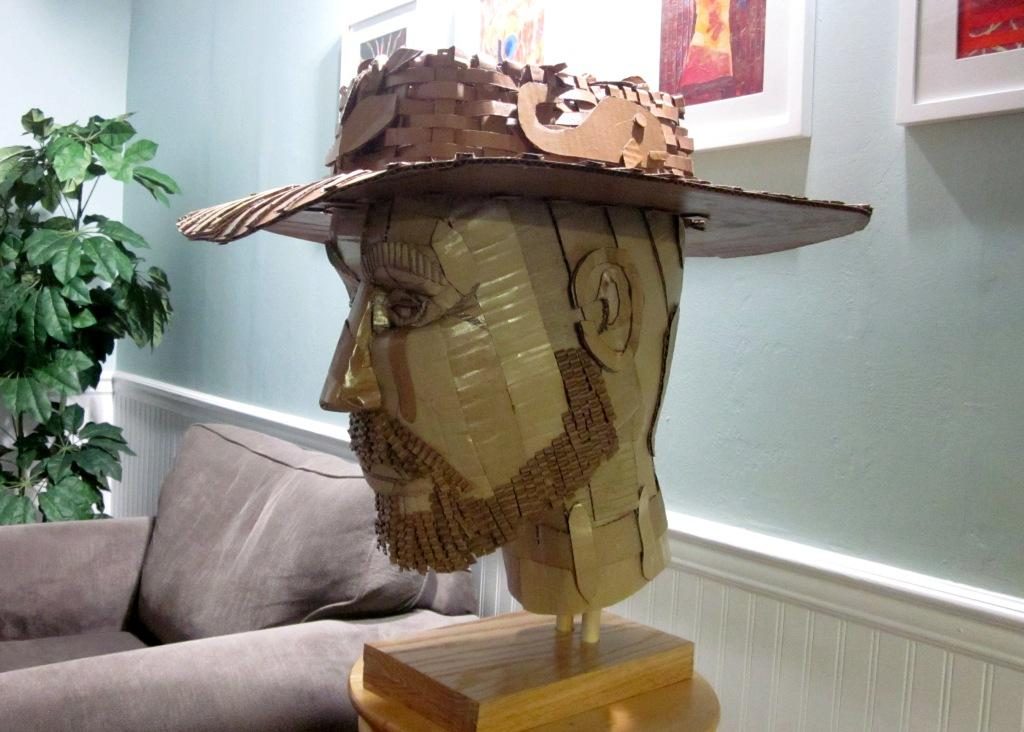 The story of Jonah has no tidy ending. The prophet sulks under his makeshift shelter while Yahweh’s question echoes across the ages, “Should I not be concerned for people who cannot tell their right hand from their left.” I pray the Lord will help not only his question, but also his compassion echo in my mind as well. May he give me courage to engage with him even when I know my logic and motivations are as misguided as Jonah’s. May he sort out my mind, heart, and will when it all feels like scrambled eggs to me. Amen
The story of Jonah has no tidy ending. The prophet sulks under his makeshift shelter while Yahweh’s question echoes across the ages, “Should I not be concerned for people who cannot tell their right hand from their left.” I pray the Lord will help not only his question, but also his compassion echo in my mind as well. May he give me courage to engage with him even when I know my logic and motivations are as misguided as Jonah’s. May he sort out my mind, heart, and will when it all feels like scrambled eggs to me. Amen
The Book of Jonah
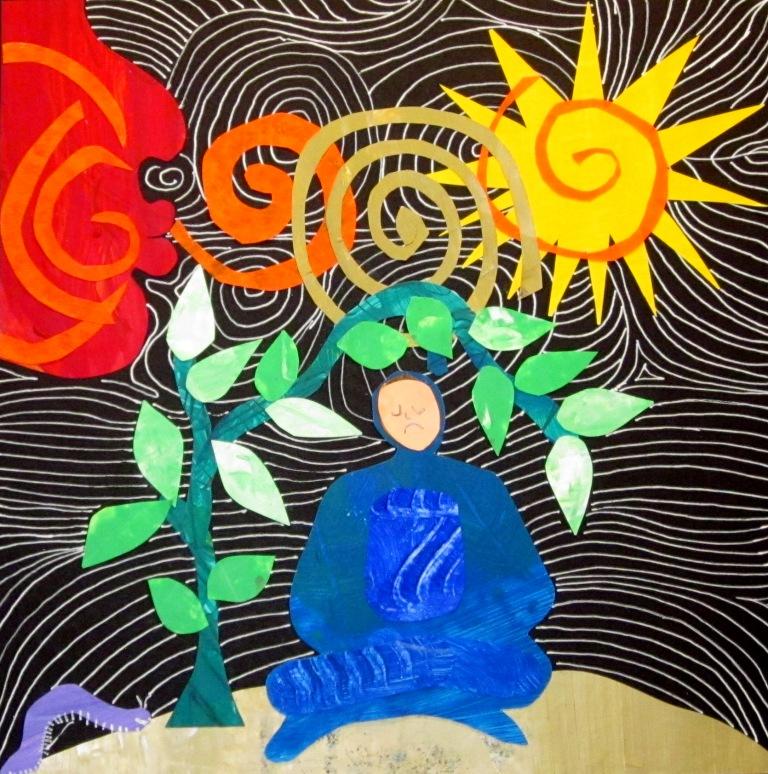
Percy the Peacock
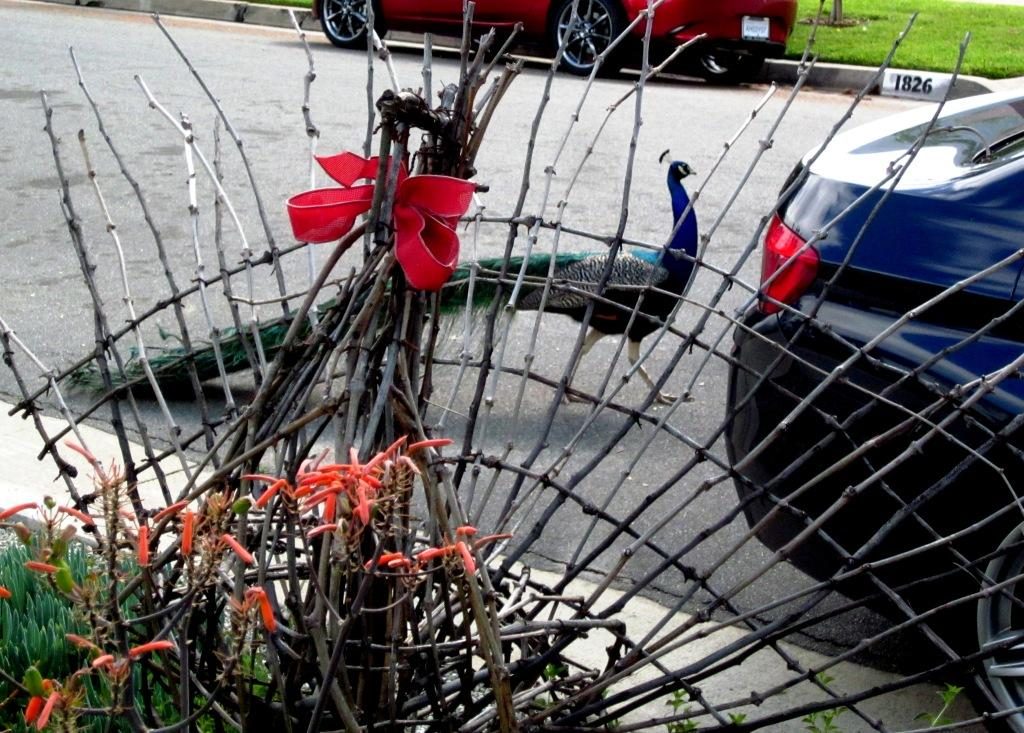
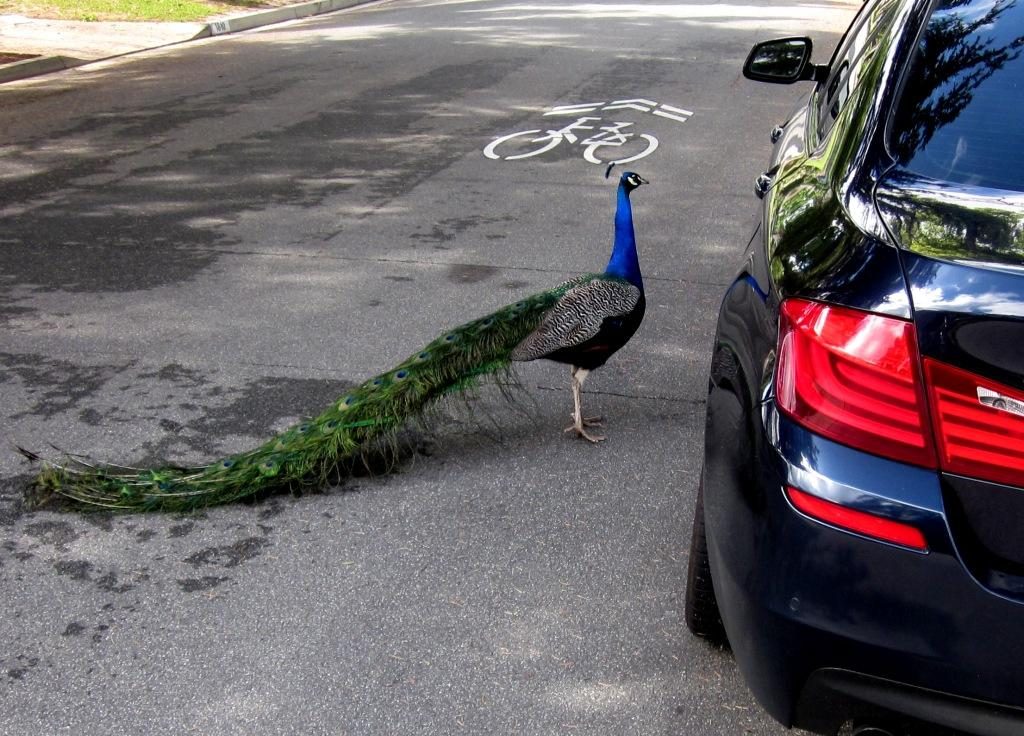
Betsy the Sheep
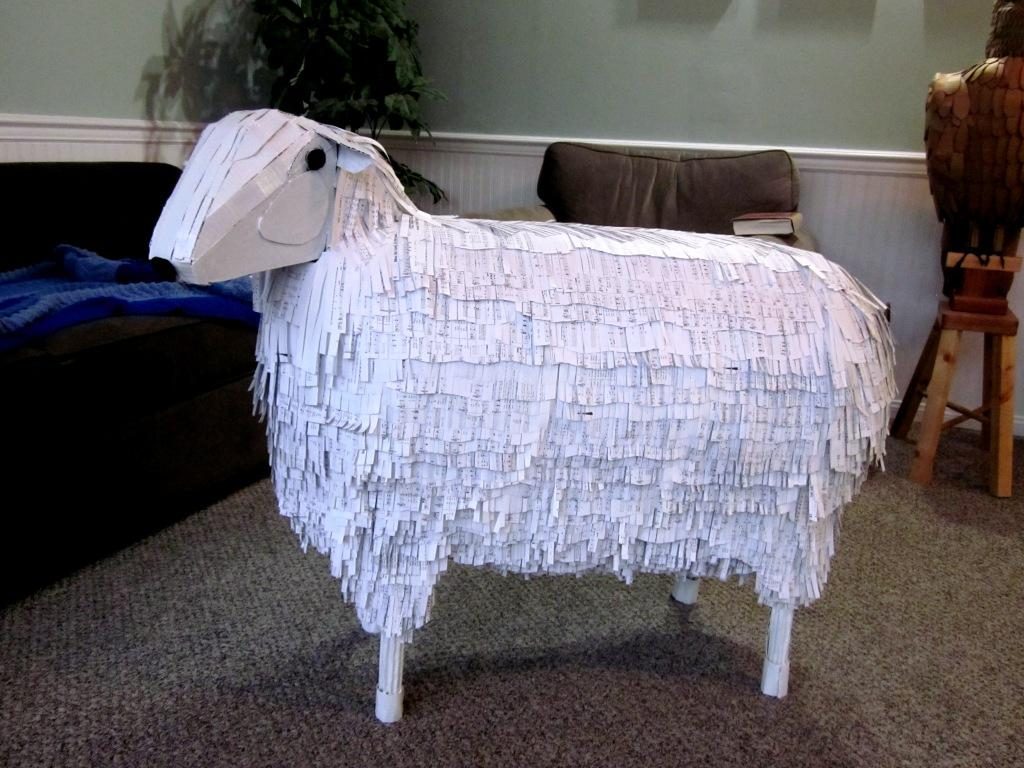
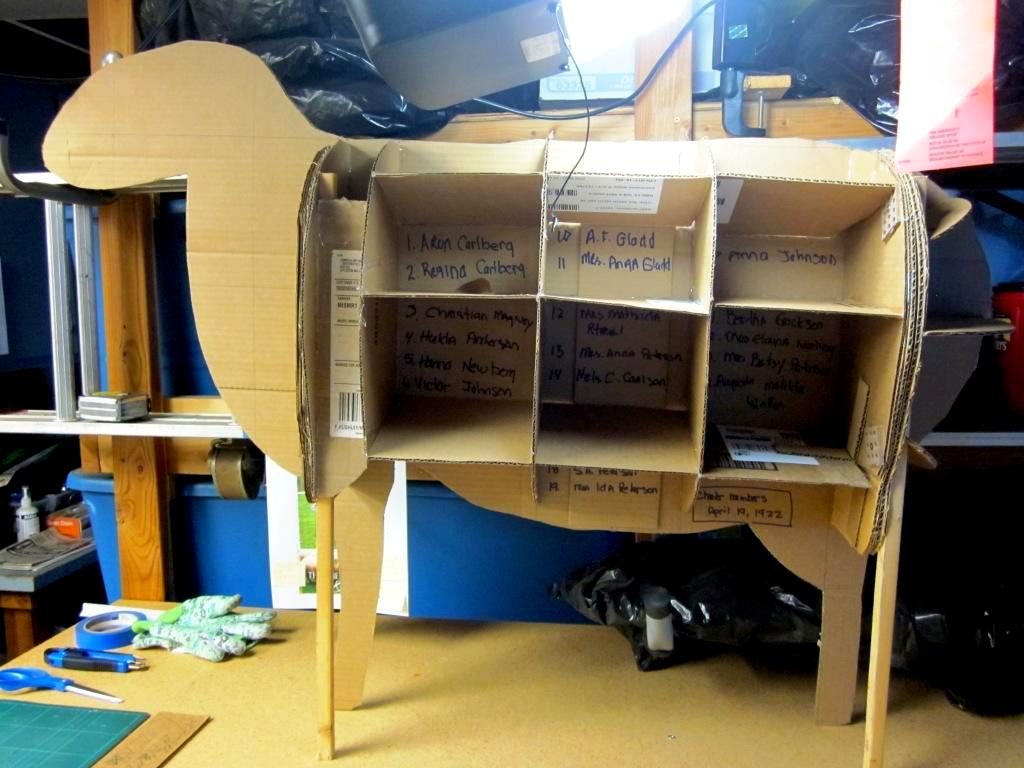
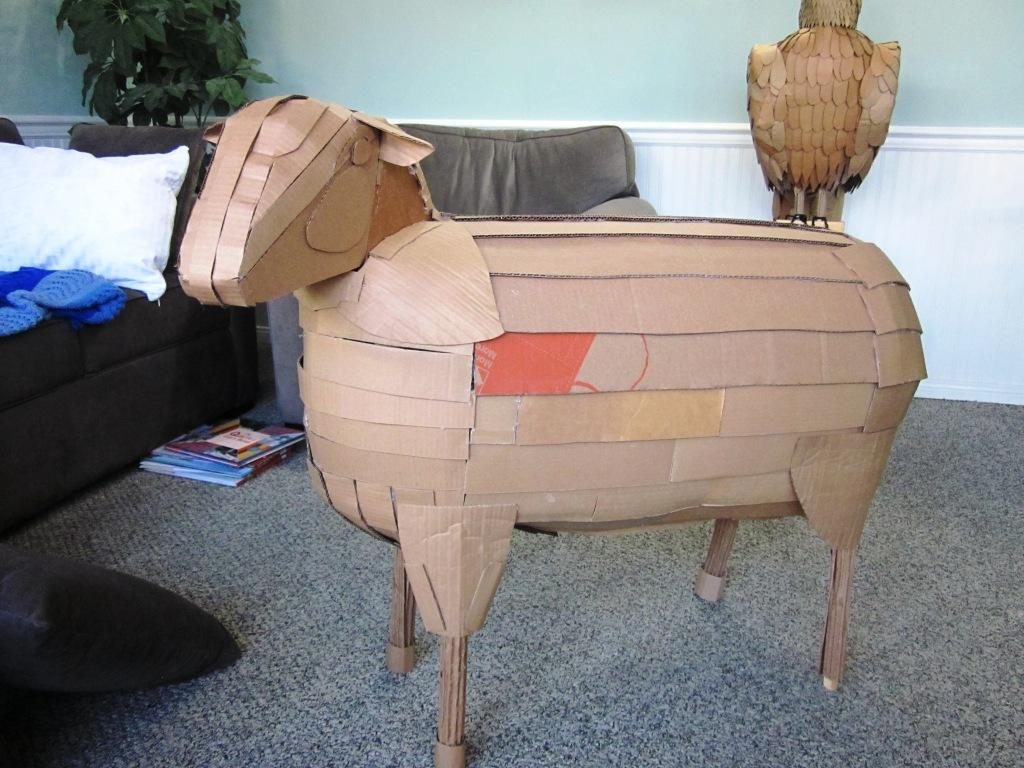
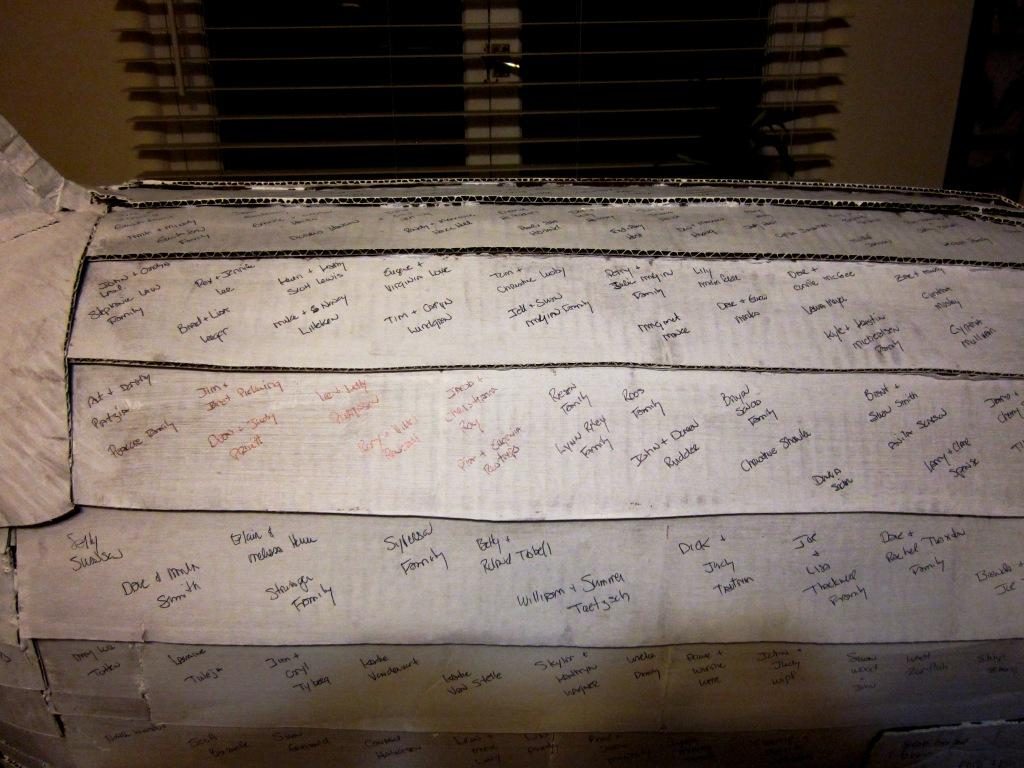
Parable of the Sew-er
One day a tailor named James went to his shop to sew. He gathered his needles and thread and laid them on the table. He then selected four pieces of cloth.
The first was a piece of thick black leather used in making jackets for bad-ass bikers who rode Harley Davidson motorcycles and screamed neo-Nazi slogans while roaring down the street. The needle broke in the tailor’s hand when he tried to stick it into the cloth. It was too hard.
The second piece of cloth was made of finely woven silk. The needle and thread passed through the cloth easily. But the silk was so thin that when the fibers got hot, they melted into a puddle of delusion. The only customers who bought the cloth were under-employed Hollywood starlets who thought they might benefit from a wardrobe malfunction when paparazzi flash bulbs started popping.
The third piece of cloth was a blend of fibers from the coffee bean and poison ivy plants. The needle and thread easily bound the fabric together. But after an hour, the customer would break out in a fit of hyperactive itching constantly checking their cell phones while scratching their armpits.
The fourth piece of cloth was made from one-thousand-thread-count Egyptian cotton. Needle and thread stitching seemed almost invisible. The tailor made a lovely cap that he wore to cover his bald head while singing songs in Central Park to nostalgic baby boomers worried about losing their social security benefits.
Whoever has ears to hear, let them hear!
For more information about the Parable of the Sower
Retreat Guides-Lessons from Mark #6-Parable of the Sower
Vincent Van Gogh and His Sower Paintings
Wind Talker
Introduction: Jesus had spent the day teaching and healing at the Sea of Galilee. Late in the afternoon, he said to his disciples in the boat with him, “Let’s go across to the other side of the lake.” He then proceeded to fall asleep in the back of the boat. Here is what I think happened next. (Ruah, by the way, is the Hebrew word for breath or wind. I have personified it here in the same way that we might call a storm Harvey or Irma.)
Wind Talker
From his perch on the mountain peak, Ruah looked out. Then he roared. His breath surged down the canyons and blew across the surface of the sea.
Trees fell. Dust flew. Wind howled.“Who dares cross me without asking my permission?” said He.
Seas swelled, waves crashed and seamen screamed, As their tiny boat was tossed like a cork in an angry caldron.
Some men prayed, others puked, still others pulled vainly on tattered ropes and sails.
All the while, one man slept. Unperturbed, unafraid, at ease in slumber while elemental forces raged all around Him.
“Who is it who sleeps?” said soaked sailors to one another. “Does he not care that Death shall swallow us whole?”
“Sleeper! Awake from your repose! Cry with us to the gods for mercy. Leave us not alone in the dead of night. Awake that we may perish together!”
Dream Maker opened his eyes to see twelve men whose hearts heaved with helpless fear, hopeless despair, angry anguish.
Looking skyward he said, “Lord of the Lake, what upsets you? It is I, do you not recognize me? We pass in peace. Calm down.
Then the winds ceased. The sea settled. All became quiet as the glow of dawn slowly appeared over the hills.
But twelve speechless men stood stunned. Faces white with fear and awe, knocking knees, trembling hands.
Who is it who talks to wicked winds and surging seas? Who is it who commands the breath of chaos, and it obeys? In his presence are we safe?
Who is safe with one who dangles death like keys on a chain? Who is safe with one who talks to the wind? Who is safe?
For more on this topic:

